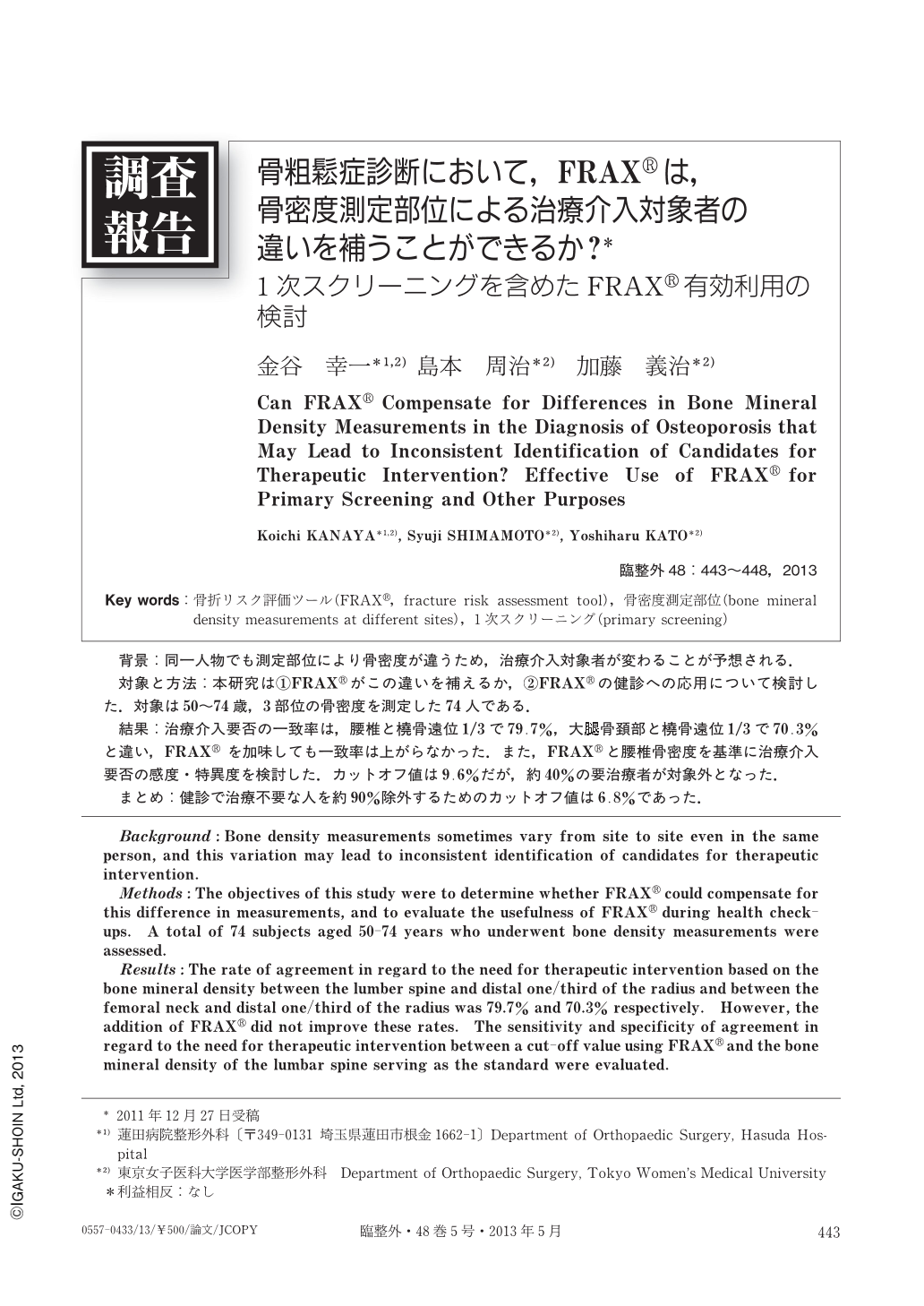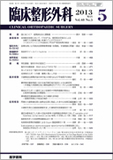Japanese
English
- 有料閲覧
- Abstract 文献概要
- 1ページ目 Look Inside
- 参考文献 Reference
背景:同一人物でも測定部位により骨密度が違うため,治療介入対象者が変わることが予想される.
対象と方法:本研究は①FRAX®がこの違いを補えるか,②FRAX®の健診への応用について検討した.対象は50~74歳,3部位の骨密度を測定した74人である.
結果:治療介入要否の一致率は,腰椎と橈骨遠位1/3で79.7%,大腿骨頚部と橈骨遠位1/3で70.3%と違い,FRAX®を加味しても一致率は上がらなかった.また,FRAX®と腰椎骨密度を基準に治療介入要否の感度・特異度を検討した.カットオフ値は9.6%だが,約40%の要治療者が対象外となった.
まとめ:健診で治療不要な人を約90%除外するためのカットオフ値は6.8%であった.
Background:Bone density measurements sometimes vary from site to site even in the same person, and this variation may lead to inconsistent identification of candidates for therapeutic intervention.
Methods:The objectives of this study were to determine whether FRAX® could compensate for this difference in measurements, and to evaluate the usefulness of FRAX® during health check-ups. A total of 74 subjects aged 50-74 years who underwent bone density measurements were assessed.
Results:The rate of agreement in regard to the need for therapeutic intervention based on the bone mineral density between the lumber spine and distal one/third of the radius and between the femoral neck and distal one/third of the radius was 79.7% and 70.3% respectively. However, the addition of FRAX® did not improve these rates. The sensitivity and specificity of agreement in regard to the need for therapeutic intervention between a cut-off value using FRAX® and the bone mineral density of the lumbar spine serving as the standard were evaluated.
Conclusions:At a cut-off value of 9.6% about 40% of the patients who needed treatment were excluded, and a cut-off value of 6.8% during health check-ups was needed to exclude 90% of the patients who did not need treatment.

Copyright © 2013, Igaku-Shoin Ltd. All rights reserved.


